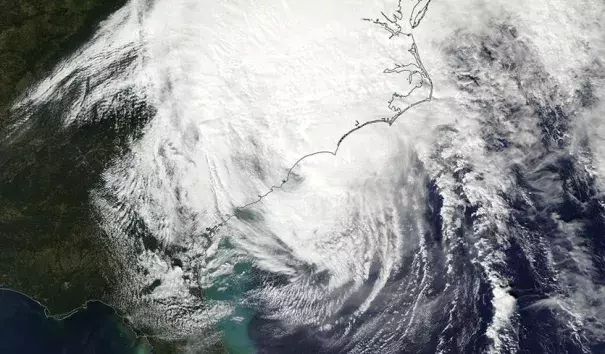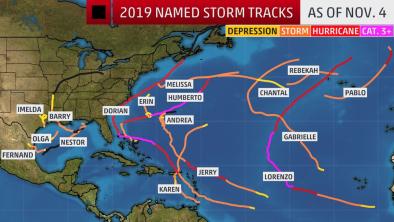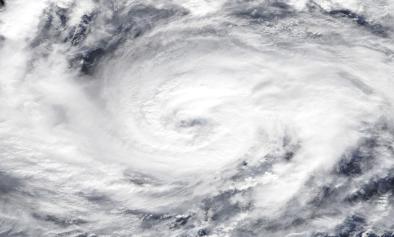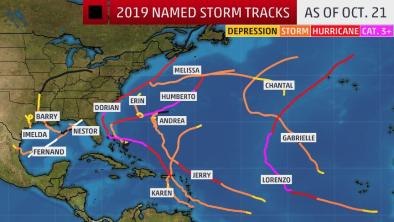Protective Wind Shear Barrier Against Hurricanes on Southeast U.S. Coast Likely to Weaken in Coming Decades

It’s well-known that high wind shear—a large change in the wind speed and/or direction with height in the atmosphere—is hostile for hurricane development, since a strong vertical change in winds creates a shearing force that tends to tear a storm apart. For example, even though the Caribbean is warm enough year-round to support hurricanes, we almost never see hurricanes in the winter or spring, since wind shear is very high these times of year due to strong upper-level subtropical jet stream winds.
When low wind shear occurs in summer or fall in the Atlantic’s main development region (MDR), from the coast of Africa through the Caribbean, an active period for major hurricane activity often results. But the major hurricanes that form in the MDR during these situations often have trouble maintaining their intensity when they reach the Southeast U.S. coast, since low wind shear in the MDR is typically accompanied by high wind shear along the Southeast U.S. coast. This high shear, typically associated with strong upper-level winds from the mid-latitude jet stream, helps protect the U.S. East Coast against strikes by full-strength major hurricanes.
But research published last month led by Mingfang Ting of Colombia University, Past and Future Hurricane Intensity Change along the U.S. East Coast, found that the Southeast U.S. protective barrier of high wind shear is likely to weaken in coming decades due to global warming. Using multiple climate computer models, the researchers found that global warming is likely to cause wind shear along the Southeast U.S. coast to decline significantly, mostly due to the northward migration of the mid-latitude jet stream that would accompany the expansion of the tropics (in meteorological lingo, we call this the expansion of the Hadley Cell). Since ocean temperatures will be rising globally, in coming decades hurricanes will have more heat energy to power them and lower wind shear as they approach the Southeast U.S. coast. The authors wrote, “future hurricanes may go through stronger intensification and cause more powerful destructions when moving into the coastal region.” The models also showed reductions in wind shear along the East Coast of Asia, “where one might expect that in the future typhoons would intensify more than in the historical climate and reach higher potential intensity values.”
Related Content





